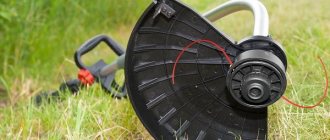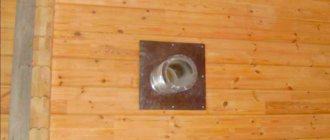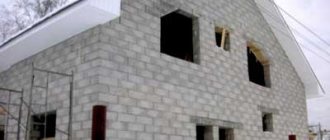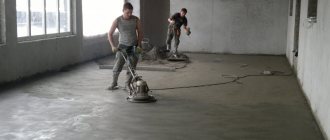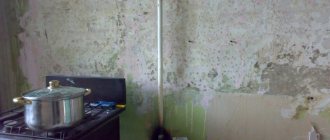When you think of a thermal imager, what immediately comes to mind is a device used by the military for night operations. But the scope of use of this device is quite wide and extensive.
It is used in the energy industry, medicine, and security activities. Hunters also use it. The article will give a detailed description of how you can make a thermal imager at home. Several options for self-manufacturing this device will be considered. A description of the operating principle will also be given.
Principle of operation
The main purpose of a thermal imager is to determine the temperature of various objects at a distance. Control is carried out in the infrared spectrum. This device functions equally in daylight, artificial or night light. Its operation cannot be affected by weather conditions, high humidity, or the temperature of surrounding objects. Any temperature differences, even a hundredth of a degree, are taken into account and transmitted to the monitor as a more brightly colored area. Military personnel and hunters use the device to identify living objects: people, animals. In industry, the main purpose of this device is to monitor changes in the temperature of operating installations, mechanisms and units.
The operating principle of a thermal imager is based on determining infrared radiation from an object. Any object has its own magnetic field. Part of it is infrared radiation, which is transmitted at a certain temperature. It is this radiation that the lens made of germanium transmits through itself. Lenses made of ordinary glass are not capable of transmitting infrared radiation, so various filming equipment and sensors are equipped with a special sensitive matrix. The passed flow enters the sensitive matrix. The surface of this element is equipped with highly sensitive diodes. The infrared spectrum that hits them changes the electrical resistance of the diodes. Data on the electrical resistance of each element is transmitted to the microprocessor. After processing, the processor transmits the final result to the monitor. A picture appears on the screen that allows you to visually assess the temperature of the object. Additionally, a digital indication of the temperature of each area is given.
On the display of a thermal imager, the image is a blurred silhouette, which is shown in different color tones. The higher the temperature, the brighter the color. This is exactly how infrared flux affects the resistance of diodes.
Thermal imagers can be portable or stationary.
- Portable ones are used mainly in the form of additional equipment for the military, hunters, and field operational employees of enterprises. With their help, the location of living or wounded people and animals is determined. The condition of individual devices or equipment is also determined.
- Stationary devices are more functional. They can be part of security and fire systems and control the temperature of various devices and mechanisms. They are often equipped with remote control and the ability to turn on or off devices that are within their control.
Any thermal imager is expensive professional equipment. It is often very difficult to purchase one for everyday use. Therefore, many people make a thermal imager with their own hands. Below are the most workable options.
The complexity of manufacturing a thermal imager
This device detects infrared radiation emitted by animals. Experienced hunters in practice use the device not to quickly search for prey, but to find wounded animals. The device is not suitable for other purposes, since its range is limited by sensitivity.
The design of a thermal imager is in many ways similar to a classic digital camera. Its design uses the following components:
- photosensitive matrix. It consists of many photocells that record the difference in the spectrum of the image in the area of operation of the optical system;
- optical system. Needed to focus the image, as well as to redirect it to the receiving device;
- information processing block;
- display for displaying graphic information.
The main difficulty in creating a thermal imager yourself lies in the materials used in the production process of the photosensitive matrix and optical system. These components can be purchased separately and independently adapted to work together.
Homemade devices
A homemade thermal imager can be in great demand among hunters. The device will help determine the location of animals in the dark. At the same time, the operation of the device will not be affected by weather, ambient temperature, various foreign objects: heated stones, trees and water. Next, we will present several options for how to make a thermal imager for hunting with your own hands.
Camera
Initially, all electronic cameras are equipped with a sensitive infrared matrix. But to ensure that this spectrum does not affect the quality of shooting, the device is equipped with a thermal filter that absorbs radiation. Therefore, all that is necessary is to simply remove this filter and slightly modernize the device itself.
To work you will need:
- Fully functional camera with LCD display.
- 2 infrared LEDs. They must have a power of at least 5 watts.
- Cooling radiators.
- Microswitch.
- Voltage regulator.
To make a thermal imager with your own hands from a camera, you must follow the following instructions:
- Unscrew all fastening screws from the back cover of the device.
- Remove the cover.
- Remove the display.
- Disconnect all electrically conductive cables.
- Remove the front panel and microphone.
- This part of the device contains a capacitor responsible for the operation of the flash. Do not touch its contacts. The capacitor must be de-energized by first short-circuiting the legs with a screwdriver.
- Next you need to remove the lens.
- Disconnect the IR filter from the matrix.
- Replace the filter with simple thin glass or transparent film. This way the camera will retain its autofocus function.
Afterwards, you need to completely assemble the device and check if it works. If all parts are installed correctly and the device is functional, then it needs to be disassembled again. Next is required:
- Connect a constant resistor to the AA battery to reduce the output voltage. A lower voltage will help extend the life of infrared LEDs for a long time and reduce battery consumption.
- Coat the prepared LEDs with thermal paste, install or secure them to the radiators. It is very important that the thermal paste and diode are in tight contact with the cooling radiator.
- Make 2 holes in the front cover of the camera. These holes are made in the upper part, on opposite sides of the lens.
- The LEDs are fixed on the outside of the housing, their connecting contacts are brought inside.
- All elements must be connected in parallel via a microswitch.
- Attach the switch to the top of the case.
Now you need to turn off the lights in the room and check the operation of the device. Using this device, you can detect thermal accumulations at a short distance.
Webcam
Another quite interesting project. This model of a homemade thermal imager is a stationary device. Using it, you can scan the surrounding area and control the temperature of various equipment and equipment. In order to assemble this device yourself, you need the following parts:
- Arduino. This microcontroller will be responsible for image transmission. It is important that this device is of high quality. Cheap counterfeits may not accept software installation and will often confuse internal settings.
- Servo. 2 such drives are needed. To control the horizontal and vertical position of the future device.
- Servo motor. It will be used to remotely adjust the camera position.
- Temperature sensor. Model MLX90614-BCI can be used. When purchasing, you need to pay attention to the end of the radio component marking. "BCI" refers to the ability to detect temperature over a narrow range. A very important function for future homemade products.
- Webcam. It is imperative that it is in full working order. Dimensions and resolution are also important. A small camera with a wide resolution will help to perform high-performance scanning, and the overall dimensions of the device on a tripod will be smaller.
- Laser pointer. You can use the cheapest school pointer.
- Tripod. Not the most important detail. You can assemble all the components on a table or simply by mounting them on a sturdy structure.
- Housings in which the servos will be installed.
- Resistor with a resistance of 4.7 kOhm - 2 pieces.
Next you need to assemble all the components together.
- Place the Arduino microcontroller in a pre-prepared case. It is important that the compartment has a reserve of internal volume for batteries.
- Combine the drive responsible for the horizontal position with the servomotor and secure it to a tripod.
- You must attach a webcam to the vertical level drive. Next, this drive is connected to the servomotor and combined with the horizontal one. A laser pointer is attached to the same drive.
After the structure has been assembled, all electronic components must be properly connected. First you need to connect an Arduino microcontroller and a temperature sensor. This is done according to the following scheme:
- GND pin to GND terminal. These contacts may be labeled Ground.
- Vin pin from Arduino with 3.3v pin of the sensor.
- Temperature sensor SDA terminal with Pin 4 of the controller. May be designated A4.
- Contact SCL sensor with terminal Pin 5 of the controller. May be designated A5.
- Solder the previously prepared resistor between the SDA and 3.3v contacts of the sensor.
- Solder the same resistor between contacts 3.3v and SCL.
- The laser module is connected to the 3.3v pin of the temperature sensor, with its own pin similar in designation.
- The GND pins are also aligned.
- The final stage is to combine all components at one point.
The entire system is powered by a 9–12 volt battery, depending on the selected microcontroller. It is also worth connecting the power of this element correctly so that it does not form a short circuit when connecting the webcam to the computer. The connection diagram for the entire system is given below.
All connections are made using wires no less than 30 centimeters long. Direct connection of both components is prohibited. Magnetic field and temperature changes can affect the correct data from the temperature sensor.
At this point, the creation of the thermal imager can be considered complete. For its functionality, you need to download a special program to the microcontroller, the sketch of which is located below. After installation, you must click on “Serial Monitor” in the software menu and confirm the action. This will change the internal “EEPROM” setting. If everything was connected correctly, the system will notify the user, and the “Finish” button will appear on the screen. At the final stage, you need to disconnect the controller from the personal computer, reboot the system and connect the device again. You will also need to download a Java application for your computer to read the information.
Download the sketch: https://cloud.mail.ru/public/WL4k/rcrfjHgpH
Download the application: https://cloud.mail.ru/public/LubL/eqSMG6pae
Advantages and disadvantages
The advantages of a self-made device include:
- simple production;
- can be made from cheap scrap materials, which is economically beneficial;
- no need to use aggressive substances. A liquid of water and alcohol can be used as a measurement;
- easy application;
- long service life.
But there are several disadvantages:
- electronic versions have a complex manufacturing scheme;
- for products with an electronic or digital device, it is necessary to purchase special boards and circuits;
- Sometimes products may show inaccurate measurements.
Homemade thermometers are a great way to save money on a new device. A DIY device will last much longer than cheap measuring devices.
Settings
After installing the software on the controller, you need to turn on the assembled device and configure it. 3 dots should appear on the computer screen: one dot should be in the center of the screen, and one in the corner.
The additional point is a laser beam. It is this that needs to be combined with the central point. Calibration completed.
This device is very bulky due to the use of a tripod. But it can easily be installed on a car or a rigid base, for example, on the roof of a house. The cord for connecting to a computer can be extended or purchased ready-made. The main feature of this device is that there is a large scope for modernization. This thermal imager can easily be used as a burglar or fire alarm. The only drawback of the device lies in the slowness of data transfer. This is due to the frequency of interaction between the controller and the webcam.
Features of application
Use in fire extinguishing and emergency rescue operations
Comparison of thermal imager and night vision device
Comparison of a night vision device with a thermal imager
We see people through the smoke
Thermal imaging allows you to see people through smoke
Remaining heat trace
Searching for a person by the thermal trace left at the place of his touch on the furniture, floor (depending on the conditions, the traces last for about 5 minutes)
Application of thermal imager in industry
Using a thermal imager when searching for flammable and toxic liquids (liquefied gases) in containers
Thermal imager cannot see through car glass
Energy applications testing live wiring
The thermal imager is able to see hidden electrical wiring under voltage and distinguish uneven temperature distribution in electrical wires
Electronic thermometer
Modern thermometers measure temperature using approximately the same principle. The difference is the heating of the infrared beam itself. As a result, not a temperature spot of different colors appears on the device’s display, but simply a number indicating the temperature characteristic.
In order to provide such a thermometer with an additional display and thermal imager function, an Arduino controller is connected to it. Now it is possible to connect an additional display and the ability to visually monitor the temperature trace. Such a device will have one significant drawback. Thermometers cannot measure over long distances. Such a device may be useful in everyday life, but not for hunting.
Necessity for hunting
A thermal imager is a multifunctional device, but, in addition to being used as stationary equipment (for monitoring various industrial processes), its portable and portable version is most useful. The above fully applies to the use of the device for hunting - moreover, it is desirable to design the device in the form of a shock-resistant and lightweight monoblock, providing a high range of visible visibility (on professional models it is 1.5 km and has a protection level of over IP54). If the device is assembled using digital rather than analog optics (which makes it difficult to distinguish a hot fire from cold snow at a distance of 100 meters), the hunter will have the opportunity to find an animal or bird in the most unfavorable conditions for ordinary human vision. These include darkness, thick fog, rain, and even thickets that camouflage animals that are frozen and not moving.
Ready thermal imager
For a thermal imager, the body radiation of warm-blooded mammals or birds will look like a bright spot on the monitor, which simply will not allow the prey to go unnoticed.
Smartphone
For people who do not have knowledge of electrical engineering, manufacturers of modern gadgets offer a simple device for connecting to a smartphone. The device is called "Seek Thermal". This device connects to a smartphone via a USB port. Works through special software. Capable of detecting heat signatures at a distance of up to 600 meters. This range is only available in the absence of extraneous thermal radiation, interference and vibrations in the air. Hunters can use this gadget to search for wounded animals, nests or nests of large birds. The main purpose of the device is to monitor temperature fluctuations in household appliances and energy metering devices.
Also, many smartphones are equipped with a built-in temperature measurement capability similar to a thermal imager. This function is available through the built-in matrix. Such programs do not allow scanning terrain over long distances.
Other options
The option of using the most common smartphones equipped with the capabilities of the Flir One thermal imager is also quite realistic (and the most comfortable for everyone who is not particularly familiar with soldering irons, screwdrivers and technical literature).
How does NVD work on a phone?
Thermal imager from a smartphone
For travelers and hunters, the screen of such a smartphone (when the appropriate mode is activated) will be in no way inferior in image quality to the simplest professional thermal imagers. And also have the ability to work in the rain and visualize any IR radiation ranging from 0 to 100°C. Although, of course, it will not allow you to distinguish anything at distances of about a kilometer. But - while being about 10 times cheaper! And at no cost (in terms of additional costs) to those who simply decide to upgrade their mobile phone to such a model.
Thermal imager from a GPS device
Calibration, verification, measurement inaccuracy
According to metrological standards, thermal imaging devices must be checked at least once a year for functionality.
When checking:
- Inspect the housing for damage and check how the device operates in each mode.
- Angular resolution is measured.
- Check the operating temperature range.
- The maximum temperature sensitivity and its unevenness across the field are measured.
- Determine the similarity of the results obtained.
In addition, such devices must be periodically calibrated. Modern models have special curtains that cover the matrices. Calibration is carried out using known temperature indicators.
The modern matrix is a high-resolution thermistor (up to hundredths of a degree).
The error and the probability of error during measurement must be indicated in the technical characteristics of thermal imaging equipment. This figure is usually 2% or 2 degrees.
What should you consider when choosing?
When choosing such a device, you should pay attention to the following:
- what temperature range is the model designed for (for example, in everyday life you can use the option with the boundaries of 0 ° C and 350 ° C);
- what is the resolution of the infrared sensor (the clarity and detail of the image on the screen depends on this);
- how thermally sensitive the model is (a low-level thermal imager is more accurate);
- how protected the product is and in what conditions it can work (for domestic use, models for use in the temperature range from -20 °C to 50 °C and conditions up to 95% humidity are considered suitable);
- what is the additional set of functions (screen backlighting, presence of a digital camera, laser target pointer, compass, etc.);
- whether the model comes with additional lenses (the wide-angle type is suitable for studying long objects, and the telescopic type allows you to get clear pictures from long distances);
- how ergonomic the design is and how the data is stored (usually choose models that can save images in JPEG format and display the result by temperature).
When choosing a model, do not forget about the way information is displayed on the screen. The following modes are possible:
- full-screen IR image (denoted Full IR);
- one picture in another (in English - Picture-in-Picture), in this case the photo is surrounded by a thermal shadow;
- with superimposed layers of a thermal image and an ordinary photo (Alpha Blending);
- the images look the same as those taken with conventional photographic equipment, but areas with temperature indicators exceeding the studied limits are highlighted in the appropriate color (IR/Visible Alarm);
- regular photography (Full Visible Light).

